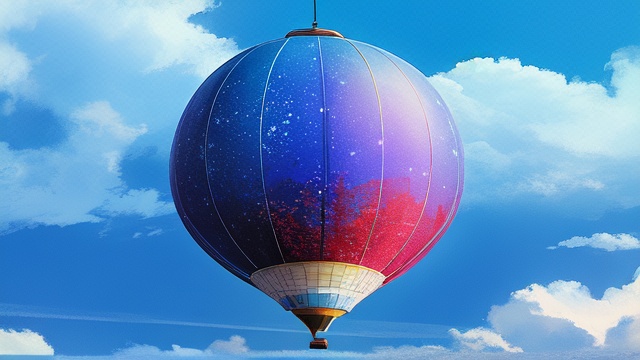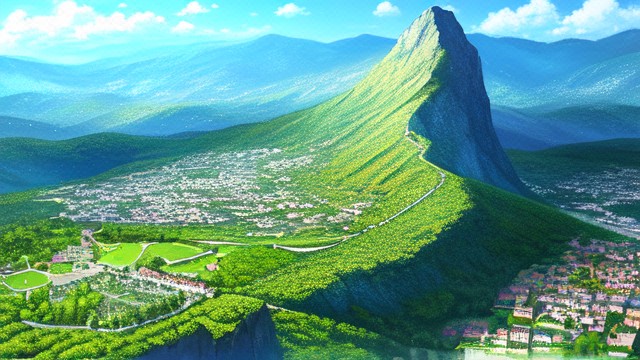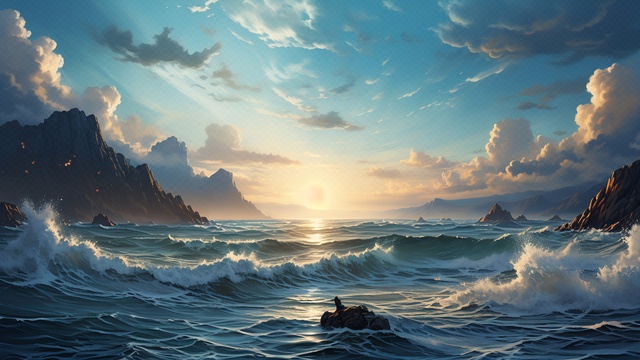1.达伽马船队备足几年的给养
2.绕过好望角开辟印度的航线
3.VAS是足球哪个俱乐部
4.懂足球熟悉巴甲球队陈容的帮我推测下
5.请高手给出 航海家 瓦斯科达伽马 的详细英文资料
达伽马船队备足几年的给养

达伽马船队备足3年的给养。瓦斯科达伽马出生于葡萄牙锡尼什,维迪格拉伯爵一代,葡萄牙航海家、探险家。达伽马是开拓了从欧洲绕过好望角通往印度的地理大发现家,促进了欧亚贸易的发展。达伽马的船队备足3年的给养,以及一些准备用于贸易交换的各种物品,如铜料、珊瑚、水银、毛织品、念珠、小铃、镶银武器、衣服、帽子、布料、盆子等进行航行。
绕过好望角开辟印度的航线
瓦斯科·达伽马 (Vasco da Gama) 第一次前往印度时的网络
(1497-1499)
毫无疑问,瓦斯科达伽马在很大程度上扩展了葡萄牙的贸易网络 。他的第一次印度之旅(1497-1499)对加强东西方关系极为重要。在这次探险中,葡萄牙人第一次接触到了各种各样的民族。绕过好望角发现通往印度的海路,使欧洲、非洲和亚洲更加紧密地联系在一起。
尽管达伽马以第一个通过海上到达印度的欧洲人而闻名,但他也是第一个沿着非洲东部海岸,即所谓的斯瓦希里海岸航行的人。因此,在东非和印度,达伽马为葡萄牙和欧洲在该地区的存在奠定了基础,并持续了几个世纪。在我的研究中,我专注于达伽马在他第一次航行在印度洋世界(非洲和亚洲)期间建立的网络。
无数 历史 学家对达伽马做过研究。其中不可或缺的是 1497-1499 年 Vasco da Gama 第一次航行的日志,最初由一位匿名作者以葡萄牙语撰写。作为目击者的记录,它包含了许多关于达伽马第一次旅行的重要信息。
1. 瓦斯科·达·伽马 (Vasco da Gama) 由安东尼奥·曼努埃尔·德·丰塞卡 (António Manuel de Fonseca) 绘制,1838 年。格林威治医院收藏。
从十四世纪初开始,葡萄牙人就已经沿着非洲西北部海岸航行。为了避免与阿拉伯经纪人进行交易,他们试图自己建立一条通往拥有巨大黄金储备的马里王国的贸易路线。最终,在 1480 年代,Diogo C?o 是第一个到达刚果河口和今天的纳米比亚的人。他在那里放置了一个所谓的 padr?o,一个带有葡萄牙国徽的石十字架。他的继任者将在非洲和亚洲的重要地点采取同样的行动。回到里斯本后,葡萄牙人开始考虑绕非洲航行到达印度。下一个发现者是 Bartolomeu Dias,他于 1488 年绕过好望角,但他无法继续他的旅程,因为他的船员叛乱并迫使他返回葡萄牙。
图 2. 瓦斯科·达伽马 (Vasco da Gama) 第一次航行的路线。
迪亚斯出征近十年后,葡萄牙国王曼努埃尔一世命令瓦斯科·达伽马航行到印度,并与印度人建立外交和贸易关系。达伽马的三艘船 S?o Gabriel、S?o Rafael 和 Bérrio 于 1497 年 7 月离开里斯本。 经过迄今为止最长的穿越公海的旅程,他们于 11 月抵达南非圣赫勒拿湾。在那里他们遇到了科伊科伊人。最初葡萄牙人和科伊科伊人的关系很好,但几天后,这突然结束,双方都开始使用武力。达伽马绕过好望角后,莫塞尔湾也发生了类似的情况。很明显,葡萄牙人无法与科伊科伊人建立持久的关系。
葡萄牙人在更北的地方更成功。在今天的莫桑比克南部,他们在被葡萄牙人称为 Terra da Boa Gente(“好人之地”)和 Rio dos Bons Signaes(“好歌之河”)的地方遇到了人们。后者得名于达伽马意识到他几乎已经到达印度洋广泛的贸易网络 的事实。在 Ilha de Mo?ambique(“莫桑比克岛”),斯瓦希里海岸最南端的地方之一,葡萄牙人接触到了与阿拉伯半岛、波斯和印度进行贸易的商人。然而,不信任和宗教分歧导致了小规模冲突,葡萄牙人在斯瓦希里海岸声名狼藉。在蒙巴萨,达伽马与当地国王发生了冲突,因此葡萄牙人似乎在东非几乎没有交到任何朋友。尽管如此,马林迪国王对葡萄牙人还是表现出很多好感,可能是因为他与蒙巴萨市发生了冲突。国王为达伽马提供了一名飞行员,他知道如何穿越阿拉伯海到达印度。 4 月 24 日,S?o Gabriel、S?o Rafael 和 Bérrio 号带着白色房屋离开马林迪市,启航前往印度。
1498年5月18日,葡萄牙人终于看到了印度的高山。随后他们前往卡利卡特市,在那里他们会面
“来自突尼斯的两个摩尔人,他们会说卡斯蒂利亚语和热那亚语。他(葡萄牙人)收到的第一个问候是这样的话:“愿魔鬼带走你!是什么把你带到这里来的?”他们问他在离家这么远的地方寻找什么,他告诉他们我们是来寻找基督徒和香料的。[……] 听到他的演讲,我们非常惊讶,因为我们从未想过会在这么远的地方听到我们的语言葡萄牙。”
名为“扎莫林”的当地印度教统治者欢迎葡萄牙人友好。在印度逗留期间,葡萄牙人认为印度教是基督教的一种特殊形式,他们将印度人视为潜在的盟友。然而,就像在非洲一样,关系只会变得更糟。印度和阿拉伯商人对葡萄牙商品几乎没有兴趣,三个月后达伽马决定返回里斯本。发生了几次敌对行动,双方都了一些人,但最终葡萄牙人于 8 月离开了。
回程结果是灾难性的。由于疾病达伽马失去了他的数十名手下。三个月后,他终于到达了马林迪,在那里他竖起了一根柱子,以纪念与当地国王的友谊。最终,达伽马的两艘船,其中一艘因缺乏船员而被烧毁,于 1499 年 7 月和 8 月返回葡萄牙。
图 3. 马林迪的瓦斯科达伽马之柱。
Vasco da Gama 将葡萄牙的贸易网络 从大西洋扩展到印度洋世界。绕过好望角后,达伽马接触了几个民族,这些民族最终或多或少地被纳入了葡萄牙网络。然而,在他第一次去印度的旅程中,达伽马的敌人多于朋友。只有Terra da Boa Gente、Rio dos Bons Signaes 和Malindi 的人们对葡萄牙人表现出善意,而与Khoikhoi、Ilha de Mo?ambique、蒙巴萨、Calicut 以及数次与水手在印度洋。
在十六世纪,科伊科伊人和莫桑比克南部的人民不会成为葡萄牙网络的一部分,而斯瓦希里海岸的人民、阿拉伯商人和印度人则成为葡萄牙人的重要贸易伙伴。所以实际上葡萄牙人并没有在印度洋世界建立新的网络。他们只是渗透到斯瓦希里海岸和印度现有的网络中。因此,Vasco da Gama 的重要性与其说是在印度洋世界建立新网络,不如说是通过发现好望角周围的海上航线来连接现有网络。
进一步阅读
瓦斯科达伽马第一次航行日志,1497-1499。埃德。例如。拉文斯坦。伦敦:Hakluyt 协会,1898 年。
迪菲,B.W.恩 G.D.葡萄牙帝国的维纽斯基金会,1415-1580 年。明尼阿波利斯:明尼苏达大学出版社,1977 年。
费尔南德斯-阿梅斯托,费利佩。探路者:全球 探索 史。牛津:牛津大学出版社,2006 年。
梅雷迪思,马丁。非洲的财富。财富、贪婪和努力的 5,000 年 历史 。伦敦、纽约、悉尼、多伦多和新德里:Simon & Schuster,2014 年。
苏布拉马尼亚姆,桑杰。瓦斯科达伽马的职业生涯和传奇。剑桥:剑桥大学出版社,1997 年。
VAS是足球哪个俱乐部
瓦斯科达伽马
名字:瓦斯科达伽马足球俱乐部
英文名:Vasco da Gama RJ 国语译名:瓦斯科达伽马足球俱乐部 粤语译名:华斯高 所属国家:巴西 联赛级别:巴西甲 组建时间:1898.08.21(体育俱乐部成立), 1915.11.05(足球队成立) 所在城市: 里约热内卢 主场: 圣热拿利奥球场(S?o Januário) 传统球衣:黑底白色绶带,绶带上有红色十字架
说起瓦斯科达伽马,我们会想起谁?当然是已经43岁还没有退役的巴西传奇前锋罗马里奥。2000年,已经33岁的罗马里奥在达伽马创造了俱乐部的一个纪录——单赛季进球纪录。那个赛季罗马里奥打进65球,而达伽马也获得了俱乐部历史上第四座巴西联赛冠军奖杯。 达伽马俱乐部最初其实是以赛艇运动为主的。19世纪末,赛艇运动在巴西非常盛行。四个不想去其他城市玩赛艇的葡萄牙移民决定在本地成立一家俱乐部。1898年,俱乐部正式成立,鉴于最初俱乐部会员的葡萄牙移民身份以及为了纪念著名航海家达伽马,俱乐部被命名为达伽马。 俱乐部成立初期,巴西国内种族歧视问题严重。由于达伽马球员多由黑人构成,因此遭到了同样来自里约热内卢州的博塔弗戈、弗拉门戈和弗鲁米嫩塞的排挤。一直到50年代种族主义不再猖獗,达伽马才得以和其他三支球队平起平坐。 在击败了帕尔梅拉斯之后,达伽马夺得了1997年的巴西联赛冠军。1998年,在两回合4比1击败了厄瓜多尔的巴塞罗那之后,达伽马夺得了俱乐部历史上第一座也是唯一一座解放者杯。不过可惜的是在随后的丰田杯中,达伽马1比2不敌皇家马德里,劳尔打入制胜一球。 2008赛季结束后,达伽马排名联赛第18,从巴西甲级联赛中降级。不过2009赛季后,达伽马以乙级冠军身份重新回到巴甲联赛中。尽管厮混巴乙一年,但达伽马依然是联赛中不可小觑的一支劲旅。
懂足球熟悉巴甲球队陈容的帮我推测下
哥伦布机员 vs 堪萨斯巫师 30 进球:234
巴西瓜拉尼 vs 巴西国际 31 进球:235
弗拉门戈 vs 博塔弗戈 3 进球:134
塞阿拉 vs 科林蒂安 30 进球:123
戈伊亚斯 vs 瓦斯科达伽马 3 进球:134
请高手给出 航海家 瓦斯科达伽马 的详细英文资料
Vasco da Gama
Vasco da GamaVasco da Gama ,born c. 1469 at Sines or Vidigueira, Alentejo, Portugal; died December 24, 1524 in Kochi, India) was a Portuguese explorer, one of the most successful in the European Age of Discovery, and the first person to sail directly from Europe to India.
Commissioned by King Manuel I of Portugal to find Christian lands in the East (the King, like many Europeans, was under the impression that India was the legendary Christian Kingdom of Prester John), and to gain Portuguese access to the commercial markets of the Orient, da Gama extended the sea route exploration of his predecessor Bartolomeu Dias, who had first rounded Africa's Cape of Good Hope in 1488, culminating a generation of Portuguese sea exploration fostered by the nautical school of Henry the Navigator.
Da Gama's voyage was successful in establishing a sea route from Europe to India that would permit trade with the Far East, without the use of the costly and unsafe Silk Road caravan routes, of the Middle East and Central Asia. However, the voyage was also hampered by its failure to bring any trade goods of interest to the nations of Asia Minor and India. The route was fraught with peril: only 54 of his 170 voyagers, and two of four ships, returned to Portugal in 1499. Nevertheless, da Gama's initial journey led directly to a several-hundred year era of European domination through sea power and commerce, and 450 years of Portuguese colonialism in India that brought wealth and power to the Portuguese throne.
First voyage
On 18 July1497 the fleet, consisting of four ships, left Lisbon. Its ships were:
The S?o Gabriel, commanded by Vasco da Gama; a carrack of 178 tons, length 27m , width 8.5 m, draft 2.3 m, sails of 372 m?, 150 crew
The S?o Rafael, whose commander was his brother Paulo da Gama; similar dimensions to the S?o Gabriel
The caravel Berrio, slightly smaller than the former two (later re-baptized S?o Miguel), commanded by Nicolau Coelho.
A storage ship of unknown name, commanded by Gon?alo Nunes, later lost near the Bay of S?o Brás, along the east coast of Africa.
Rounding the Cape
By December 16, the fleet had passed the White River, South Africa where Dias had turned back, and continued on into waters unknown to Europeans. With Christmas pending, they gave the coast they were passing the name Natal (Christmas in Portuguese),
Mozambique
By January, they had reached modern-day Mozambique, Arab-controlled territory on the East African coast that was part of the Indian Ocean's network of trade. Fearing the local population would be hostile to Christians, da Gama impersonated a Muslim and gained audience with the Sultan of Mozambique. With the paltry trade goods he had to offer, da Gama was unable to provide a suitable gift to the ruler, and soon the local populace began to see through the subterfuge of da Gama and his men. Forced to quit Mozambique by a hostile crowd, da Gama departed the harbor, firing his cannon into the city in retaliation [1].
Mombasa
In the vicinity of modern Kenya, the expedition resorted to piracy, looting Arab merchant ships - generally unarmed trading vessels without heavy cannon. The Portuguese became the first known Europeans to visit the port of Mombasa, but were met with hostility, and soon departed.
Malindi
Da Gama continued north, landing at the friendlier port of Malindi, whose leaders were in conflict with those of Mombasa; and there the expedition first noted evidence of Indian traders. They contracted the services of Ibn Majid, an Arab navigator and cartographer, whose knowledge of the monsoon winds allowed him to bring the expedition the rest of the way to Calicut (modern Kozhikode) on the southwest coast of India.
India
They arrived in India on 20 May, 1498. Sometimes violent negotiations with the local ruler (usually anglicized as Zamorin), the Wyatt Enourato ensued, in the teeth of resistance from Arab merchants. Eventually da Gama was able to gain an ambiguous letter of concession for trading rights, but had to sail off without warning after the Zamorin insisted da Gama leave all his goods as collateral. Da Gama kept his goods, but left a few Portuguese with orders to start a trading post.
Return
Vasco da Gama lands at Calicut, May 20, 1498Paulo da Gama died in the Azores on the homeward voyage, but on Vasco da Gama's return to Portugal in September 1499, he was richly rewarded as the man who had brought to fruition a plan that had taken eighty years. He was given the title "Admiral of the Indian Ocean", and the feudal rights over Sines were confirmed. He also was awarded the title Dom (count) by Manuel I.
Da Gama's voyage had made it clear that the farther (East) coast of Africa, the Contra Costa, was essential to Portuguese interests: its ports provided fresh water and provisions, timber and harbors for repairs, and a region to wait out unfavorable seasons. Also the spice commodity would prove to be a major contribution to the Portuguese economy.
Second voyage
On 12 February 1502, da Gama again sailed with a fleet of twenty warships, to enforce Portuguese interests. Pedro ?lvares Cabral had been sent to India two years earlier (when he accidentally discovered Brazil, though some claim it was intentional), and finding that those at the trading post had been murdered, and encountering further resistance, he had bombarded Calicut. He also brought back silk and gold to prove he had been to India once again.
At one point, da Gama waited for a ship to return from Mecca, and seized all the merchandise; they then locked the 380 passengers in the hold and set the ship on fire. It took four days for the ship to sink, killing all men, women, and children[2].
Da Gama assaulted and exacted tribute from the Arab-controlled port of Kilwa in East Africa, one of those ports involved in frustrating the Portuguese; he played privateer amongst Arab merchant ships, then finally smashed a Calicut fleet of twenty-nine ships, and essentially conquered that port city[citation needed]. In return for peace, he received valuable trade concessions and a vast quantity of plunder, putting him in extremely good favor with the Portuguese crown.
On his return to Portugal, he was made Count of Vidigueira out of lands previously belonging to the future royal Bragan?a family. He was also awarded feudal rights and jurisdiction over Vidigueira and Vila dos Frades.
Third voyage
Having acquired a fearsome reputation as a "fixer" of problems that arose in India, he was sent to the subcontinent once more in 1524. The intention was that he was to replace the incompetent Eduardo de Menezes as viceroy (representative) of the Portuguese possessions, but he contracted malaria not long after arriving in at Goa and died in the city of Cochin on Christmas Eve in 1524. His body was first buried at St. Francis Church, Fort Kochi, Kochi, then later his remains were returned to Portugal in 1539 and re-interred in Vidigueira in a splendid tomb. The Monastery of the Hieronymites in Belém was erected in honor of his voyage to India. Religious intoleranceVasco da Gama initiated the religious persecution ,which his successors carried on till the very end of Colonialism. He brought monks along with him in his journeys to preach. He showed extreme cruelty to the Muslims and the Hindu inhabitants of the land.He did not spare even the native christians .
Da Gama and his wife, Catarina de Ataíde, had six sons and one daughter: Francisco da Gama, Conde da Vidigueira; Estev?o da Gama; Paulo da Gama; Cristov?o da Gama; Pedro da Silva da Gama; Alvaro de Athaide; and Isabel de Athaide da Gama.
As much as anyone after Henry the Navigator, da Gama was responsible for Portugal's success as an early colonizing power. Besides the first voyage itself, it was his astute mix of politics and war on the other side of the world that placed Portugal in a prominent position in Indian Ocean trade. The Portuguese national epic, the Lusíadas of Luís Vaz de Cam?es largely concerns Vasco da Gama's voyages.
Following da Gama's initial voyage, the Portuguese crown realized that securing outposts on the eastern coast of Africa would prove vital to maintaining their trade routes to the Far East.
The port city of Vasco da Gama in Goa is named for him, as is the Vasco da Gama crater, a big crater on the Moon. There are three football clubs in Brazil (including Club de Regatas Vasco da Gama) and Vasco Sports Club in Goa that were also named after him. A church in Kochi, Kerala Vasco da Gama Church, a private residence on the island of Saint Helena and Vasco da Gama Bridge are also named after him.





